- Himadri Speciality Chemicals
- Dalmia Bharat Refractories
- Birla Tyres
- Anurag Choudhary
- carbon black
- tires
- electric vehicle
Kesoram Industries To Himadri Speciality Chemicals: Rebirth Of A Giant
- By Gaurav Nandi
- January 06, 2025

Birla Tyres, once a dominant name on Indian roads, is going a transformation under new ownership. Acquired by Himadri Speciality Chemicals and Dalmia Bharat Refractories, the iconic brand is being restructured to target emerging opportunities within electric vehicles and off-the-highway tyres, supported by strategic innovation and forward integration.
Birla Tyres ruled many Indian roads for over two decades till its fall in 2023. Born as a division of Kesoram Industries in 1991, the tyre maker collaborated with global giant Pirelli shortly after its inception for advanced tyre manufacturing technology.
It started production of truck and bus tyres from its Odisha plant in 1992, and later, between 1995 and 2000, went onto produce tyres across different vehicular categories including passenger, two-wheeler, commercial, farm and heavy earth-movers.
The Kolkata-based manufacturer produced both radial and bias tyres and had a densely spread supply chain with over 170 sales depots within India and an international network across 17 countries during the helm of its operations.
Production capacities had risen to 15 million tyres with revenue crossing INR 200 billion, annually, until the second decade of the 21st century. The company that once held a moderate share in the Indian tyre market, competing with brands like MRF, Apollo Tyres, CEAT and JK Tyre, was now facing operational efficiencies leading to dwindling market share.
Hence, a new era heralded within the operations of one of the major homegrown tyre makers. Furthermore, the axe fell at the core of the entity in 2019 when Kesoram Industries demerged its tyre division into an independent entity called Birla Tyres Limited to focus exclusively on the tyre business.
Soon after, in 2021, financial crisis led the company to file for insolvency under the Indian Bankruptcy Code due to mounting debts and operational losses. Production slowed significantly with plants running below capacity. The company had incurred debt of over INR 100 billion by 2021, and in FY23, Birla Tyres’ reported a net loss of INR 370.7 million.
Between 2022-2023, the company made revival attempts as it sought investors, explored cost-cutting measures, focused on realigning its product portfolio, emphasising two-wheeler tyres and niche markets like electric vehicles, but to no avail.
Alas, in October, 2023, control of Birla Tyres was handed over to a consortium of Kolkata-based Himadri Speciality Chemicals and Dalmia Bharat Refractories.
The rebirth
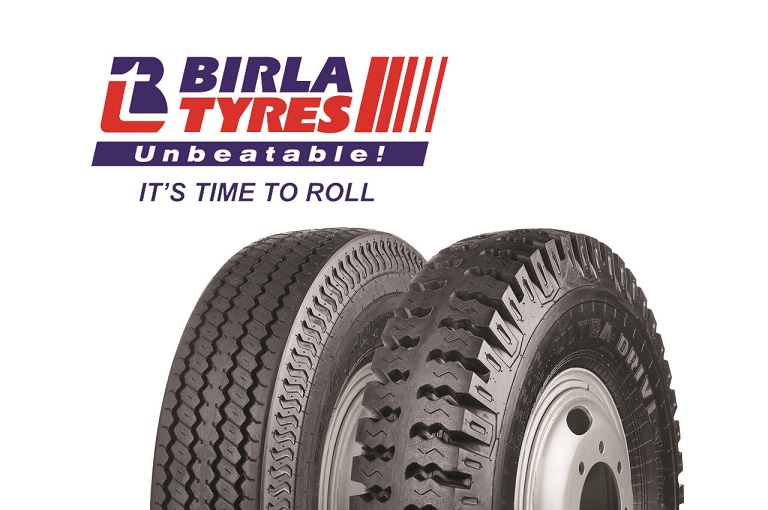 According to media reports, Himadri Speciality Chemical and Dalmia Bharat Refractories jointly acquired Birla Tyres under India’s Corporate Insolvency Resolution Process, approved by the National Company Law Tribunal. Birla Tyres faced insolvency due to mounting debt, including claims of INR 115.2 billion by financial creditors. The resolution plan proposed a payment of INR 3.16 billion to secured creditors against admitted claims of INR 109.7 billion.
According to media reports, Himadri Speciality Chemical and Dalmia Bharat Refractories jointly acquired Birla Tyres under India’s Corporate Insolvency Resolution Process, approved by the National Company Law Tribunal. Birla Tyres faced insolvency due to mounting debt, including claims of INR 115.2 billion by financial creditors. The resolution plan proposed a payment of INR 3.16 billion to secured creditors against admitted claims of INR 109.7 billion.
The new owners aimed to revitalise Birla Tyres by leveraging its existing infrastructure, particularly at the Balasore plant in Odisha. While Himadri Speciality Chemicals planned to focus on passenger car tyres, including those for electric vehicles (EV), Dalmia Bharat Refractories proposed to oversee procurement and material supply.
The strategic partnership sought to re-establish Birla Tyres in niche markets, supported by Himadri’s expertise in carbon black production, which constitutes a significant cost component in tyre manufacturing.
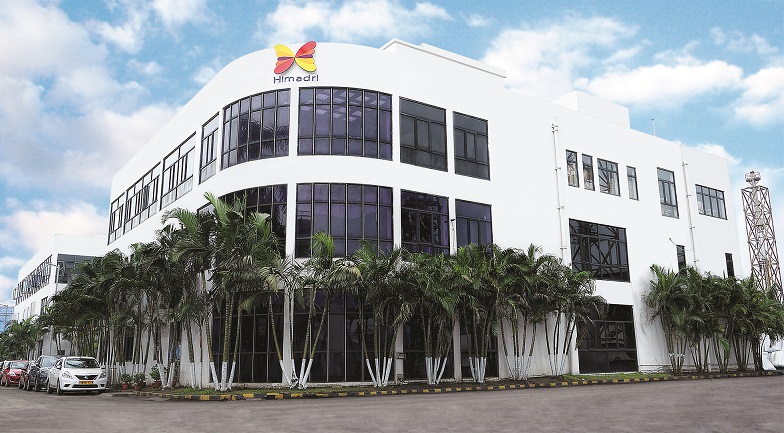
Moreover, the consortium decided in November 2023 to invest INR 2.5 billion to operationalise the passenger car radial segment of the fallen giant.
Path forward
Over a year has passed since the controlling interests have been transferred, but the Indian tyre landscape eagerly awaits the resurgence of a much-loved brand. Speaking to Tyre Trends on the re-launching of Birla Tyres, Himadri Speciality Chemicals Managing Director Anurag Choudhary said, “We plan to initially continue producing Birla Tyres existing range but have outlined a strategic shift towards focusing on electric vehicle tyres in the long term. With the electric vehicle market rapidly expanding, the demand for specialised tyres designed to meet the unique requirements of EVs is expected to grow significantly. Additionally, we also aim to prioritise off-the-highway (OTR) tyres as part of our long-term vision, targeting key industrial and off-road sectors.”
Himadri Speciality Chemicals plans to start the manufacturing process from Birla Tyres’ plant in Balasore, which has with a capacity of 400 tyres per day. While the company acknowledges the growing potential of the EV market, it has not yet determined how much of this capacity will be allocated to EV tyre production. This decision will depend on finalising future plans and market strategies.
Additionally, no capital expenditure plans have been finalised yet, but it was informed that the specialty chemicals company is considering the establishment of a dedicated supply chain to support the tyre operations.
Alluding to why a specialty chemicals company invested in acquiring a tyre company, Choudhary averred, “Our acquisition of Birla Tyres aligns with a long-standing strategy of forward integration. Historically, we have evolved by building on core processes, starting with coal tar distillation and progressing into areas such as oils, carbon black and eventually speciality black products.”
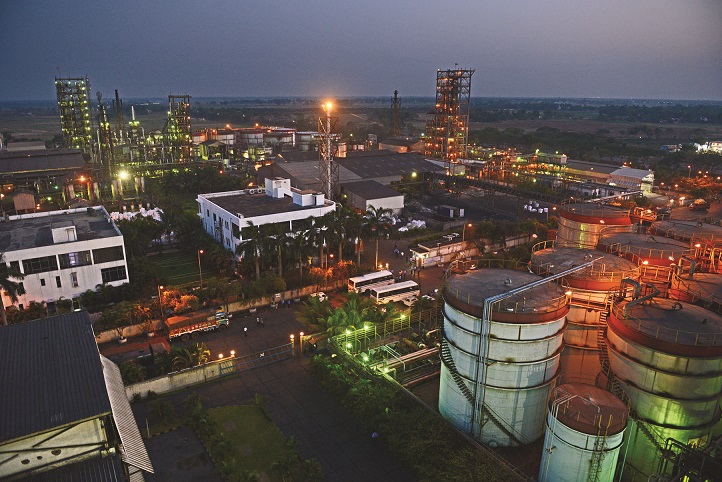
“This forward-thinking approach has also driven the development of special coal tar-derived materials for applications like anode materials in lithium-ion batteries, reflecting our commitment to innovation and research and development. The decision to acquire Birla Tyres is a natural extension of this strategy. Tyre production uses a significant proportion (almost 26 percent) of carbon black by volume, making it a logical step for the company to integrate downstream into the tyre manufacturing sector. This acquisition not only ensures a steady demand for its carbon black but also positions the company to leverage its expertise in specialty materials and innovation for future growth,” he added.
When asked about plans to introduce sustainable materials in the revival of Birla Tyres, the executive indicated that the company is steadfast in its plan to foster a circular economy and is exploring ways to enhance the reusability of existing materials including carbon black but emphasised that these efforts are still in the research and development phase.
Regarding competitiveness in the tyre market, he stated that the company is devising a comprehensive strategy. As for the challenges of entering the tyre industry, he acknowledged that being a newcomer brings a range of hurdles. However, he viewed these challenges as opportunities to innovate and carve a niche in the market.
Forward integration
Himadri Speciality Chemicals in also setting up a lithium-iron phosphate plant in Odisha to further its expansion into the automotive sector. Furthermore, it also sees growing demand for carbon black within the Indian market.
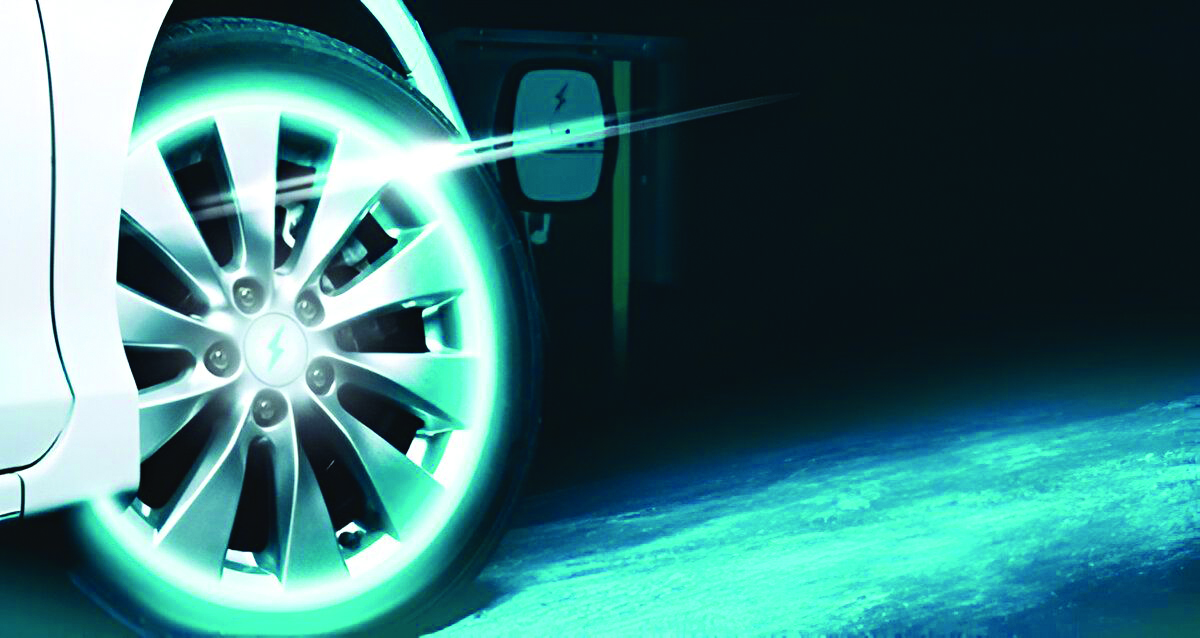
Commenting on opportunities in India's carbon black market, Choudhury highlighted, “Himadri is focusing heavily on speciality carbon black, a high-value segment with diverse applications. We have a current production capacity of 60,000 metric tonnes and plan to expand it to 130,000 metric tonnes, positioning us as the world’s fourth-largest producer in this niche. We are also focusing on speciality carbon black for EV tyres.”
When asked about the potential of recovered carbon black, he expressed doubts about its ability to replace virgin carbon black due to quality constraints. While the company supports sustainability under its ESG commitments and is a signatory to the United Nations Global Compact, recycled carbon black is expected to remain a small, complementary product in its portfolio.
Speaking on the lithium-iron phosphate plant in Odisha, Choudhary mentioned that the first phase is designed to produce 40,000 metric tonnes, supporting 20 gigawatt-hours (GWh) of battery production. The project involves a capital expenditure of INR 113 billion and marks a significant step in Himadri’s strategy to support the EV and battery sectors.
Moreover, he sees significant growth opportunities in the EV market, which he mentioned is at a critical inflection point, leading to exponential adoption. The company is investing in materials essential to the EV ecosystem. It has focused on developing key battery components such as cathodes and is conducting research on anodes, which together account for 65 percent of a lithium-ion cell’s cost.
- United Nations Economic Commission for Europe
- UNECE
- Jean Rodriquez
- Working Party on Noise and Tyres
- GRBP
Global Tyre Standards
- By Gaurav Nandi
- December 08, 2025
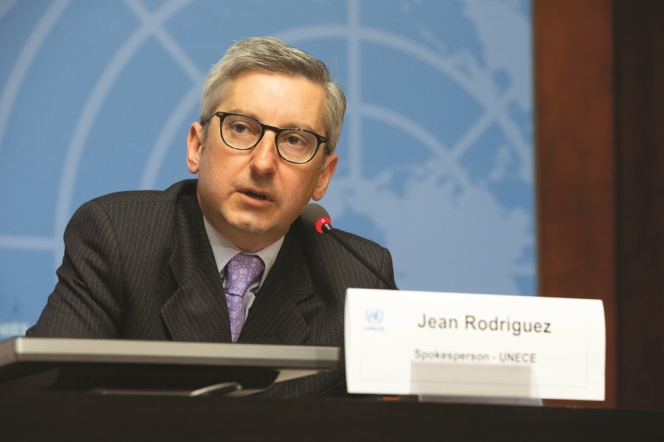
In a discussion with Tyre Trends, Chief of the United Nations Economic Commission for Europe (UNECE) Information Unit Jean Rodriguez detailed how the Working Party on Noise and Tyres (GRBP) is driving international regulations on tyre safety, noise and sustainability. From pioneering micro-plastic emission measurement to strengthening wet-grip requirements and updating studded and retreaded tyre rules, Rodriguez emphasised UNECE’s role in shaping a harmonised global framework that balances consumer safety with environmental protection.
What is the role of the Working Party on Noise and Tyres (GRBP) within UNECE?
As one of the six subsidiary bodies of the World Forum for Harmonisation of Vehicle Regulations, hosted by UNECE, the Working Party on Noise and Tyres continues to spearhead globally harmonised standards through UN Regulation No. 117, covering tyre rolling resistance, noise, wet grip and, with recent developments, abrasion measures. These UN Regulations form the backbone of safety and environmental tyre specifications adopted by numerous countries and a substantial share of tyre producers globally.
What were the key regulatory changes between 2022 and 2025?
In early 2024, the Working Party adopted the first-ever methodology to measure particle emissions from tyres, critical for tracking micro-plastic emissions via two protocols including real-world 8,000 kilometres convoy tests and 5,000 kilometres rolling-drum lab tests. These are slated for integration into a new UN Regulation by September 2025 for passenger tyres, expanding into heavier vehicle categories (C2, C3) into 2026 and 2027.
Once in force, these regulations will contribute to significantly reducing micro-plastic pollution. In 2016, tyre abrasion was estimated to represent 78 percent of the 1.3 million metric tonnes of microplastics entering the ocean.
The UNECE methodology to measure particle emissions from tyres will become the reference methodology of the Euro 7 proposal of the European Union. Moreover, EU tyre regulation and labelling covering noise, wet grip, rolling resistance and environmental transparency build directly on UNECE’s standards.
How has UNECE addressed tyre safety at legal minimum tread depth?
GRBP introduced requirements ensuring that tyres at the legal minimum tread depth (1.6 millimetres) retain a minimum wet-grip level relative to new tyres. This is a shift towards safety and sustainability by permitting consumers to drive worn tyres safely, potentially reducing waste. It obliges manufacturers to design tread compounds and patterns that preserve wet performance over the tyre’s life, not just when new.
What regulations were introduced for studded tyres in 2022?
In September 2022, a new UN Regulation to cover performance requirements and marking of studded tyres entered into force to increase road safety by introducing harmonised snow grip requirements for studded tyres. It simplified the legislative situation in several countries that allowed the usage of studded tyres on public roads, introduced strict requirements and procedures for testing their snow grip and allowed consumers to benefit from more coherent winter tyre markings.
What additional areas has UNECE been working on to align safety and environmental goals?
By refining noise standards, updating testing protocols and promoting tyre lifecycle efficiency, UNECE is steadily shaping regulations to match environmental and safety objectives. This includes work on enhanced noise testing for tyres (UN Regulation No. 117) and motorcycles (UN Regulation No. 41) and vehicle alert systems (UN Regulation No. 138/51)
How does UNECE ensure global relevance, transparency and participation in its work?
All this work in setting technical specifications testifies to UNECE’s high relevance in providing a global harmonisation framework. Its expanding scope, especially in environmental dimensions such as micro-plastic emissions, is helping it maintain policy leadership and normative force, shaping tyre safety, noise and environmental performance worldwide.
A very important aspect of UNECE work is that it prevents fragmentation of the tyre regulatory landscape. GRBP is open to governmental experts from any member country of the United Nations and to any regional economic integration organisation set up by member countries of the United Nations including experts of governmental organisations and non-governmental organisations (NGOs).
UNECE provides secretarial support to WP.29 and its working parties, facilitating negotiations between contracting parties to the 1958, 1997 and 1998 agreements. More than 100 experts participate in the sessions of GRBP and all documents considered by GRBP are available in the public domain.
What are UNECE’s priorities going forward to support safety and the circular economy?
Leveraging its technical authority and norm-setting capacities, UNECE is uniquely positioned to foster a globally harmonised tyre labelling framework that covers rolling resistance, wet grip and, for the first time, tyre abrasion. This framework promotes consistency, environmental protection, consumer transparency and ultimately supports worldwide regulatory alignment.
At its session in September 2025, GRBP will consider the proposal for a new UN Regulation on the uniform provisions concerning the approval of tyres with regard to abrasion performance.
UNECE is also updating UN Regulations no. 108 (passenger car/towed vehicle Retreaded tyres), 109 (commercial vehicle retreaded tyres) and 172 (snow performance of retreaded tyres) to ensure retreaded tyres meet the same safety standards as new tyres, even in challenging winter conditions but in a way that makes regulatory processes smoother and more conducive to circular economy practices.
Trelleborg Tires Retains Crown As Brazil's Best Agriculture Tyre
- By TT News
- December 07, 2025

For the second consecutive year, Trelleborg Tires has earned the prestigious title of Best Agriculture Tyre at the 22nd Visão Agro Brazil Awards. This 2025 accolade, presented during a ceremony in Ribeirão Preto, highlights the company’s dedicated role in advancing Brazilian agribusiness through technological leadership and a commitment to sustainable practices. The award was received on behalf of the company by Fábio Metidieri, Agri Sales Director for Yokohama TWS Brasil.
Central to this achievement is Trelleborg’s ongoing innovation, particularly the expansion of its ProgressiveTraction technology within the TM tyre series. This engineering, featured in models from the row-crop TM600 to the high-horsepower TM1000, utilises a dual-edge lug design. The tread operates progressively on the soil to enhance traction, promote self-cleaning and minimise vibration. The resulting benefits include improved operational efficiency, increased tyre durability and superior soil protection, directly supporting farmers’ goals for greater productivity and environmental stewardship.
The company’s deep roots in Brazil, supported by a specialised local team, rigorous field testing and strong manufacturer partnerships, ensure its solutions are finely tuned to regional demands. This local infrastructure allows for responsive technical service and keeps product development closely connected to the practical challenges faced by the agricultural sector. The Visão Agro Brazil Awards, judged by a panel of industry executives and researchers, serve as a recognised benchmark for innovation and performance, making this recognition a significant testament to Trelleborg Tires’ impact on the country’s farming landscape.
Metidieri said, “Receiving this award at such a prestigious event once again reinforces our commitment to Brazilian agriculture. Our goal is to keep advancing in technology and field performance, ensuring that every Trelleborg tyre delivers real value – helping farmers operate more efficiently, sustainably and profitably. This award reflects the trust placed in our team and our products by professionals throughout the sector. It strengthens our commitment to delivering technologies that address local challenges and help shape the future of Brazilian farming.”
Premium Makeover
- By Sharad Matade
- December 05, 2025
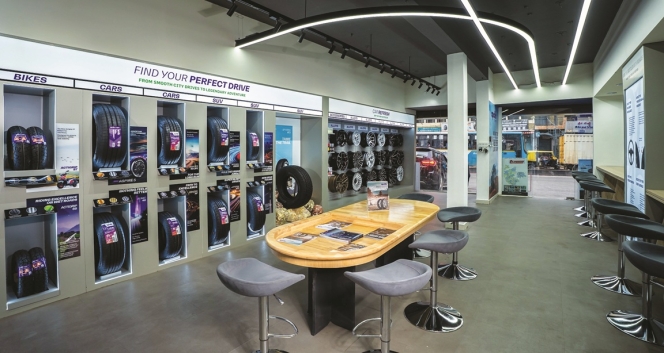
India’s tyre retail industry is undergoing a dramatic makeover, moving far beyond the cluttered workshops and transactional buying of the past. Fuelled by rising demand for premium vehicles, digital-first customers and stronger export momentum, tyre makers are transforming retail spaces into sleek, immersive experience centres. What was once a routine utility purchase is rapidly evolving into a premium, advisory-led mobility experience designed for a new generation of motorists.
India’s tyre retail scene is shifting gears, leaving behind the era of crowded workshops and impersonal counters. In their place, manufacturers are rolling out sleek, thoughtfully designed, tech-powered spaces that echo the luxury of high-end car showrooms. What started as a few bold pilots in big cities has quickly become the go-to playbook for tyre brands eager to win over a new generation of savvy, comfort-loving, digital-first customers.
From urban to rural areas, this transformation reveals a profound change in how Indians approach mobility. Today’s motorists – especially those behind the wheel of SUVs, luxury sedans and electric cars – want more than just a tyre swap. They crave expert advice, a polished atmosphere and a shopping experience that reflects the elegance of their vehicles. Once a utilitarian afterthought, tyre retail is now emerging as a coveted part of the automotive journey.
Strong OEMs and replacement demand in both domestic and export markets underpin the transition.
In FY 24-25, tyre exports from India surged by nine percent year-on-year to INR 251 billion, according to data released by the Ministry of Commerce. With an estimated annual turnover of INR 1 trillion and exports exceeding INR 250 billion, the Indian tyre industry stands out as one of the few manufacturing sectors in the country with a high export-to-turnover ratio.
Though tyre exports have hit a speed bump due to higher US tariffs on select categories of Indian tyres compared to those of competing nations, the long-term prospects for the Indian tyre industry remain strong. According to a joint report by ATMA and PwC India titled ‘Viksit Bharat 2047: Vision and Roadmap for the Indian Tyre Industry’, India’s tyre production volumes are projected to grow nearly fourfold by 2047, while industry revenues are expected to expand almost 12 times to about INR 13 trillion.
Against this backdrop, tyre makers are modernising aggressively to retain customers and build a more profound emotional affinity. The broad shift is visible in how retailers are reinventing their spaces. Lounges with crafted lighting, upholstered seating, minimalist décor and large digital walls are replacing traditional steel racks and dusty counters. Informational murals and heritage display trace decades of tyre innovation, strengthening brand storytelling. Stores increasingly feature curated experience zones where customers can explore tyre technologies, EV-compatible profiles, eco-friendly materials and performance characteristics through visual displays and interactive tools.
A clear sign of this trend is the rise of personalised, advisory-led engagement, replacing the old dependence on technicians. Retailers now profile driving habits, terrain usage, daily distance and vehicle type to recommend tyres customised to each consumer’s pattern. This service-led model is shifting the customer’s mindset from price-first decision-making to long-term value evaluation.
The new premium outlets are designed to deliver a lifestyle-driven, hospitality-grade experience rather than a traditional tyre shop visit. Customers receive personalised mobility recommendations tailored to their vehicle, driving style and needs, supported by smart service innovations like intelligent product selection, quick-fit services and digital scheduling. The space also acts as a community hub for driving enthusiasts, creating a connected ecosystem around the brand. With lounge-style comfort, immersive storytelling and specialised tyre and service packages for luxury and performance vehicles, the outlet blends convenience, premium care and brand-centric offerings into an elevated customer experience.
“Customer experience at the point of sale is another branding exercise poised to change buyer characteristics. Multi-brand outlets often commoditise the tyre-buying experience. That’s why companies are launching exclusive brand outlets with curated customer experiences. Over the next decade, new delivery models will emerge,” said Kavan Mukhtyar, Partner and Leader – Automotive, PwC India.
Apollo Tyres articulates this change as a move towards lifestyle-led retailing. Its new super-premium outlets have been built not as showrooms but as emotionally resonant spaces.
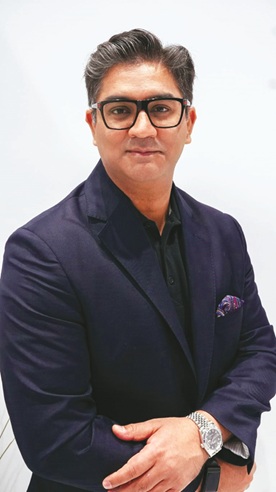
Udyan Ghai, Group Head of Marketing at Apollo Tyres, explained that the company’s new retail architecture is anchored in long-term strategic priorities: “Our move to a lifestyle-led, immersive tyre retail format is driven by our own desire for premiumisation and category leadership. We are looking at elevating tyre retail in India by setting new benchmarks and shifting from commodity selling to a premium, lifestyle-driven experience.”
He said the brand aims to ‘emotionally engage with customers, offer tailored solutions, build a community of driving enthusiasts and tap into premium segments – all while delivering a differentiated, modern retail experience’.
Ghai believes retail ambience plays a decisive role in influencing perception. “A relaxed and well-designed lounge signals comfort, trust and premium value,” he said, adding that such environments elevate tyres from a mundane requirement to a core element of vehicle care and identity.
Digital transparency, he believes, is the second pillar of modern tyre retail. “Digital systems ensure transparency and help demystify tyre selection – tread patterns, speed ratings, durability and fitment. Consumers feel less dependent on a technician’s word and more in control, which boosts their confidence and perceived fairness,” Ghai said.
Customers today are inundated with choices, and digital systems, he said, turn tyre buying into an ‘informed, personalised decision’, comparable to selecting a smartphone, a pair of performance shoes or even a detailed insurance plan. According to Ghai, this new retail model is ‘a strategic investment in the future of mobility retail’, designed to be scalable and to support community-building events, workshops and enthusiast interactions. As India moves towards EVs and connected cars, he said these premium outlets will provide EV-focused tyre expertise, interactive digital tools and personalised recommendations that appeal to younger, digitally savvy motorists.
CEAT shares a similar philosophy. Its national retail revamp focuses heavily on digital immersion, consistent messaging and design-led layouts. Lakshminarayanan B, the company’s Chief Marketing Officer, said the modernised CEAT Shoppes are fundamentally reshaping the category.

“The modern layouts and digital integration in CEAT Shoppes are revolutionising the tyre-buying experience, making it more experiential and customer-centric,” he said, adding that these updated outlets elevate the experience, build trust through uniform communication and drive decisions by reducing ambiguity around features and value.
Lakshminarayanan highlighted CEAT’s attempt to harmonise customer experience across demographics: “The approach in urban markets through premium stores, product offerings and services is to create access and aspiration for premium customers. The same is replicated in upcountry markets also.”
The CEAT Executive said the company is building for a future where personalisation will be the defining characteristic of tyre retail. “CEAT is focused to drive the future of tyre retail through end-to-end personalisation,” he said.
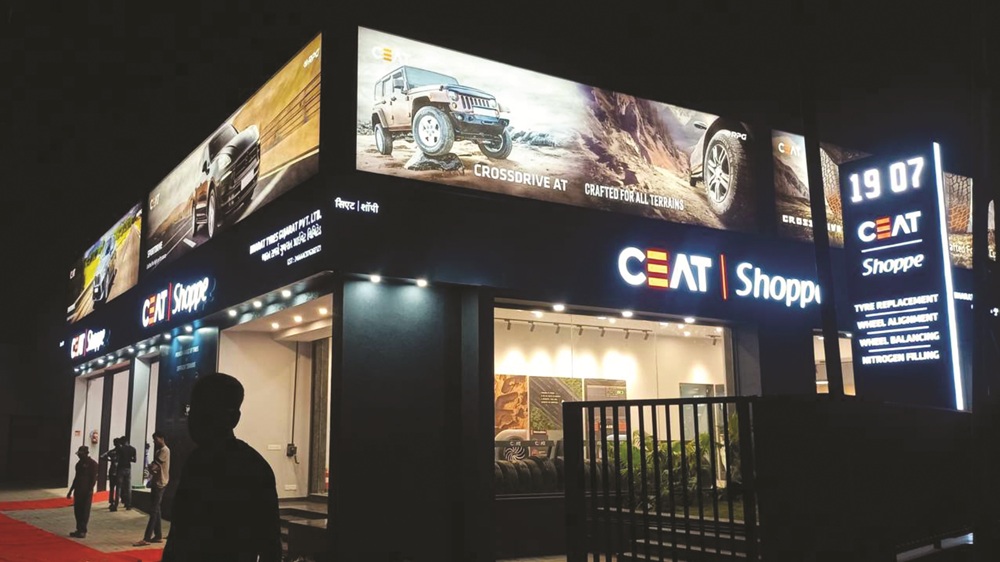
As experiential retail takes hold, service portfolios inside tyre stores are expanding faster than ever. Advanced wheel balancing, laser-driven alignment systems, nitrogen inflation, premium alloy wheel installations, EV-oriented tyre consultations, digital appointment scheduling and real-time tyre-health diagnostics are now standard. Many outlets also provide car detailing, interior cleaning, ceramic coating, PPF application, brake checks, battery inspections and multi-point vehicle health reports, making them full-fledged mobility centres.
Global players have pushed the envelope even further. Michelin’s 25,000-square-foot Experience Store in Nashik features a heritage wall and innovation displays showcasing electric mobility, materials science and environmental responsibility. It houses precision wheel-alignment bays, detailing studios, and accessory galleries. “We are proud to unveil Michelin’s first Experience Centre in India. The sole purpose of this store is to go beyond traditional tyre retail and provide customers with an immersive experience of the brand,” said Shantanu Deshpande, Managing Director of Michelin India.
Continental Tyres is also strengthening India’s premium retail ecosystem through its CPD outlets, which include ambient lounges, diagnostic equipment, premium alloy wheels and digitally enabled guidance. “With our new CPD store in Indore, we bring Continental’s promise of safety, innovation and comfort closer to Madhya Pradesh’s clients,” said Samir Gupta, Managing Director of Continental Tyres India. He added that the brand’s ‘In the Market, For the Market’ approach is central to its retail expansion strategy.
Even in rural markets, tyre retail is becoming more formalised, structured and service-oriented. JK Tyre’s ‘Steel Wheels’ format is targeted at towns with populations under 100,000 and offers standardised layouts, value-added services, best-in-market pricing and instant claim facilities. “Our Rural expansion programme will help us reach the interiors of the real Bharat that is economically vibrant but often underserved. We are not just building retail points; we are also enabling entrepreneurship and access,” said Managing Director Anshuman Singhania.
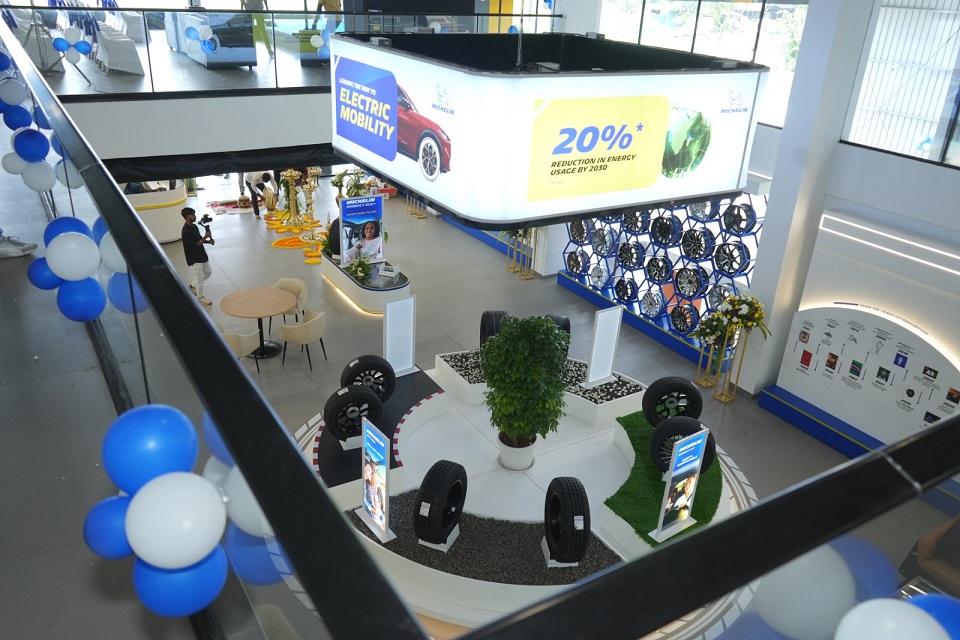 Together, these developments mark a decisive shift in how tyre brands engage customers. Tyre stores are increasingly functioning as lifestyle environments, designed for comfort, informed decision-making, personalisation, transparency and community. The industry is moving away from a product-first mindset to a customer-experience-led philosophy.
Together, these developments mark a decisive shift in how tyre brands engage customers. Tyre stores are increasingly functioning as lifestyle environments, designed for comfort, informed decision-making, personalisation, transparency and community. The industry is moving away from a product-first mindset to a customer-experience-led philosophy.
As premium cars, SUVs and EVs become mainstream, and as younger motorists prioritise digital empowerment and ambience, tyre retailers are aligning with these new expectations. India’s tyre makers are building a retail landscape where experiential engagement, technology integration, service breadth and emotional connection define long-term brand success.
For an industry long anchored in grease, metal and functionality, the transformation is profound. Tyre retail in India is no longer just about fitment; it is becoming a premium mobility experience, curated for a generation that demands clarity, comfort and an elevated relationship with every aspect of vehicle ownership.
Kumho Tire To Build First European Plant In Poland With $587mln Investment
- By TT News
- December 05, 2025
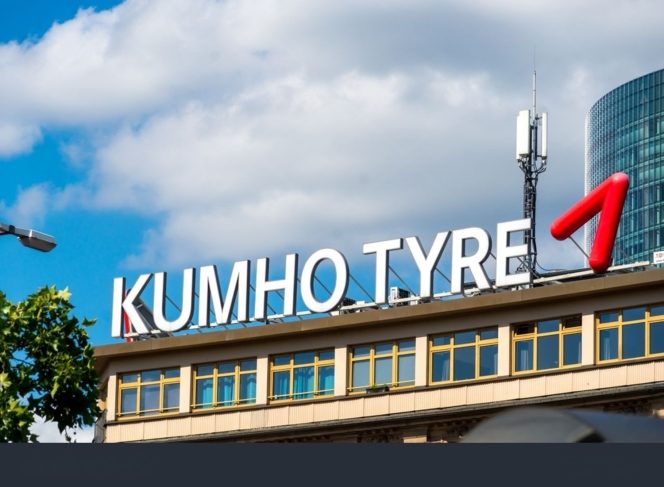
Kumho Tire will establish its first European manufacturing plant in Poland’s Opole region as the South Korean company seeks to expand its position in one of the world’s largest tyre markets.
The group said the factory is scheduled to begin initial operations in August 2028, subject to investment approval and licensing. Kumho plans to produce 6m units annually in the first phase and expand capacity in line with demand. Total planned investment is USD 587 million.
Kumho has spent recent years evaluating multiple European locations, including Poland, based on logistics, labour availability, infrastructure, market access and investment incentives. The company said Opole was selected as the optimal site owing to supply-chain stability within the EU and the region’s supportive operating conditions.
Europe accounts for about a quarter of global tyre consumption and is home to several major automotive manufacturers. The region represented roughly 26.6 per cent of Kumho’s sales last year. The company has previously relied on exports to serve European customers, which it said limited its competitiveness in the market.
The new plant is intended to strengthen Kumho’s ability to supply high-value-added products, including high-performance and larger-diameter tyres, to European vehicle makers.
Kumho currently operates eight production sites across South Korea, China, the US and Vietnam, with combined annual output of 65 millionunits. The Polish plant will complete what the company describes as a production network spanning Asia, Europe and North America.
Jung Il-taek, Kumho Tire’s Chief Executive, said: “The European market occupies a very important strategic position in the global tire industry,” adding that “Kumho Tire will go beyond simple exports and dramatically enhance premium brand value by strengthening quality and service competitiveness through local European production and supply.”


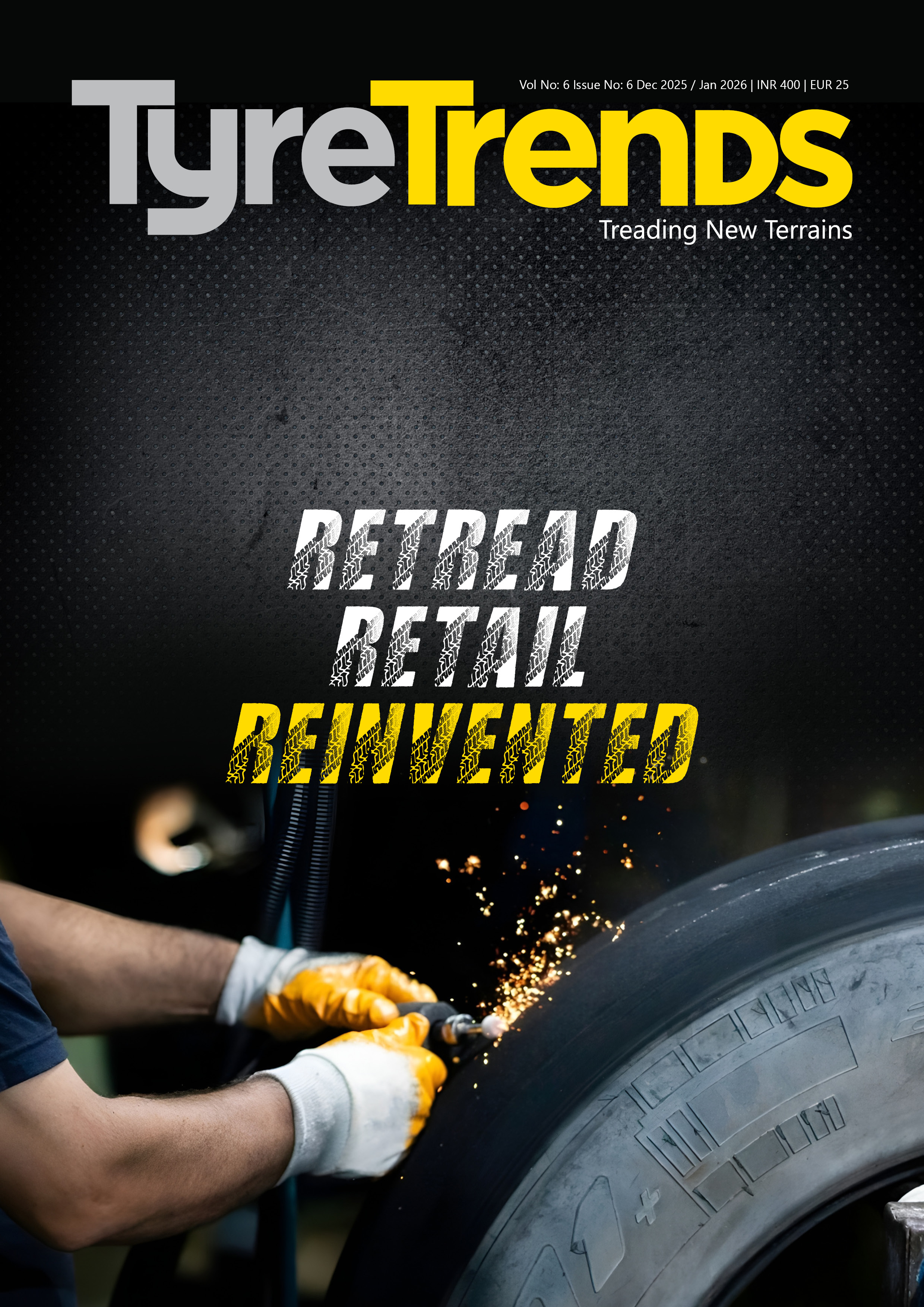

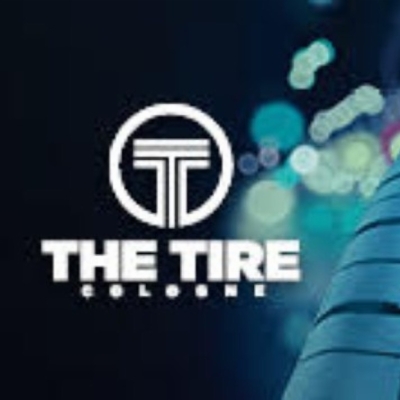


Comments (0)
ADD COMMENT